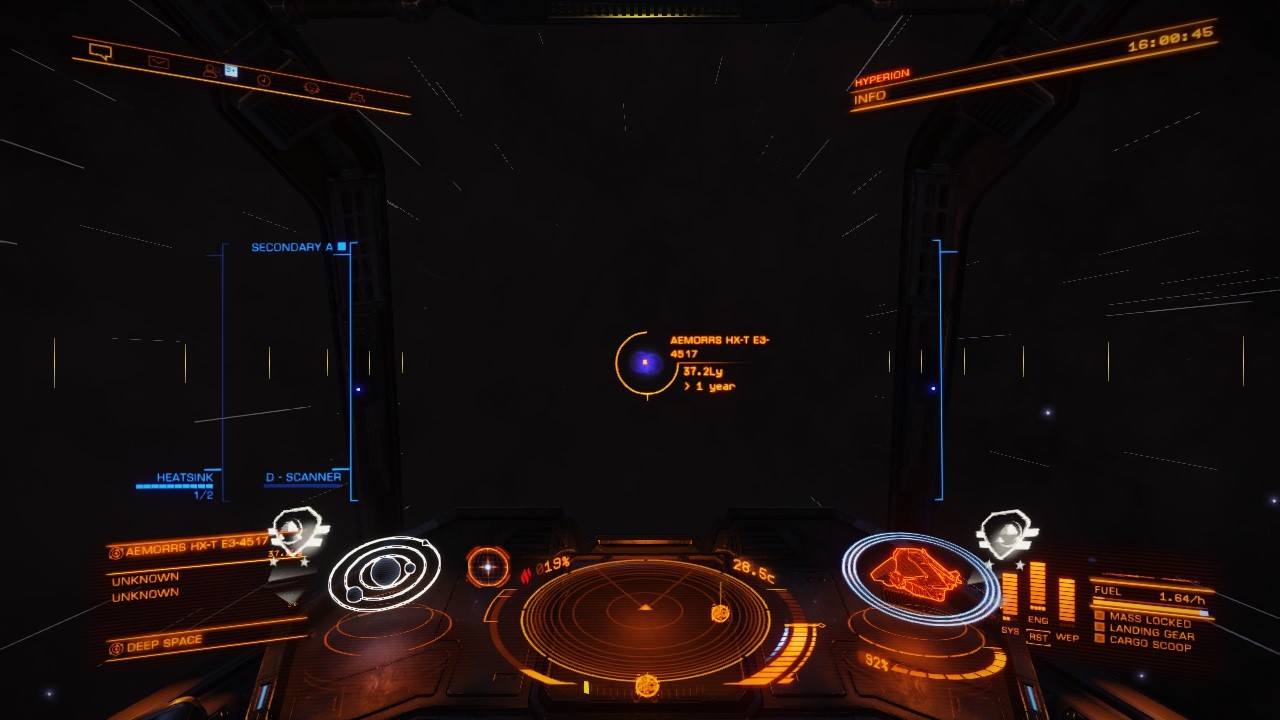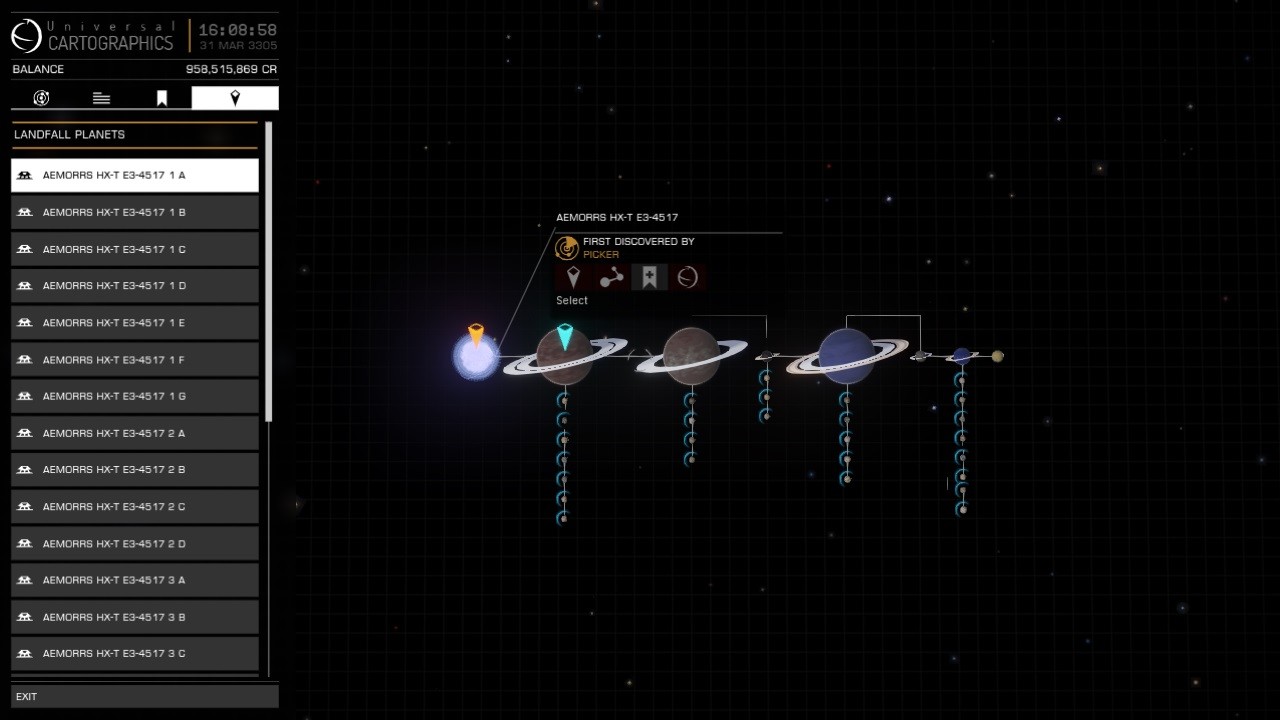Suggestion for POI's name: The Graeae Nebula
POI Type: Planetary Nebula
Reference System: Aemorrs HX-T e3-4517
This system is indeed a Nebula.
During the Distant Worlds 2 expedition, commander Jav Marlo passed by this system and realized that, in spite of being an already discovered system, nobody reported about its nebula.
His log can be read
here.
(...)
Back on track from the Hot Temptation to the basecamp of the expedition at Cerulean Tranquility, I made another curious discovery. I was fuel scooping at Aemorrs PU-N d7-1422, a system with nothing interesting, when I saw what looked like a nebula in front of me. I locked the system in the navigation computer and looked for information in the Galactic Mapping Project database.

From thirty seven light years away it looked like a double planetary nebula with a neutron star at its core. It was strange that the Galactic Mapping Project did not mention that there was a nebula there. The entry only said that the system was visited for first time by commander Scrublord-sama. Once there I could see in the Pilots Federation database that commanders Picker, Dragonsbreath, Polar Fox and Spica had been there too. The neutron star and some of the planets had their name tags. I guess they arrived there running the neutron highway and did not have the time to properly scan the system or to notify it was nebula. A pity because, according to my scanners, the system contains thirty five stellar bodies, many landable moons and it is a green system with everything necessary to synthesize jumponium.
And it is a beautiful place too. The blue and purple colors of the nebula combined with the jets of neutron star and the star mat of the Perseus Arm creates a mesmerizing sight.

I took some pictures before departing and fully scanned all the stellar bodies in order to transmit the data to the Galactic Mapping Project initiative as soon as I were able. If they finally name this nebula, maybe they will recognize that, in spite of being an already discovered system, it was commander Jav Marlo who reported about the nebula during the Distant Worlds 2 expedition. With so many commanders passing by the nebula without telling and being it in the Perseus Stem, it reminded me of the story of The Graeae, the three sorcerer sisters that were sought by Perseus during the beginning of his quest to defeat the Gorgon. The Graeae were three perpetually old women, who had to share a single eye. As the women passed the eye from one to another, Perseus snatched it from them, holding it for ransom in return for the location of the Hesperides that were keeping the weapons he needed to defeat the Gorgon. When the sisters finally agreed to led him to the Hesperides, he returned what he had taken. I think that The Graeae Nebula would be an appropriate name for Aemorrs HX-T e3-4517 system.
(...)



![IMG]](https://imgur.com/7SEDllk/IMG])

















